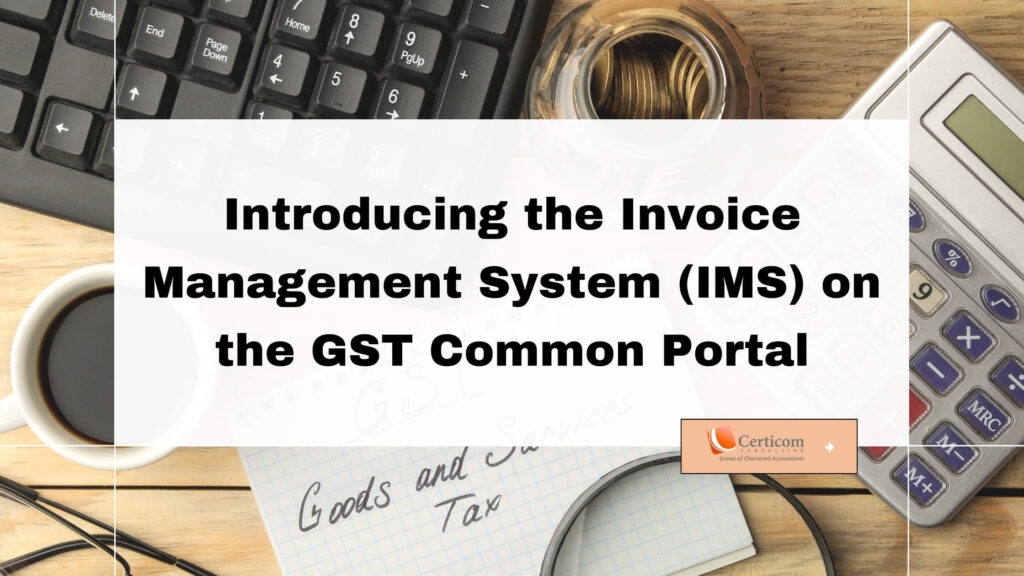Introducing the Invoice Management System (IMS) on the GST Common Portal

The GST Common Portal is rolling out a significant new feature designed to enhance efficiency and simplify invoice management for taxpayers: the Invoice Management System (IMS). Set to go live on October 14, IMS aims to streamline how taxpayers manage their invoices, making the GST reconciliation process more accurate and efficient.
Invoice Management System (IMS)?
The Invoice Management System (IMS) is an innovative tool on the GST Common Portal that allows taxpayers to efficiently manage and interact with their invoices. With this new feature, taxpayers can now accept, reject, or defer invoices for future use, significantly simplifying the reconciliation process while improving overall GST compliance. The IMS is a key addition designed to help users stay on top of their invoices and ensure accurate GST filings.
Key Features of IMS
After logging into the GST Common Portal, users can access IMS by navigating to Services > Returns > Invoice Management System (IMS). Once inside the system, users are presented with two main options:
- Inward Supplies
- Outward Supplies
Each option offers tailored functionality, ensuring a seamless experience in managing both incoming and outgoing invoices.

Managing Inward Supplies
Under the Inward Supplies section, taxpayers can view and manage invoices reported by their suppliers through GSTR-1/IFF/GSTR-1A. These invoices are categorized under four different statuses:
- No Action: Invoices that are yet to be addressed.
- Accepted: Invoices accepted by the taxpayer.
- Rejected: Invoices rejected by the taxpayer.
- Pending: Invoices deferred by the taxpayer for future review.
Users can select multiple invoices at once to perform bulk actions, such as marking them as accepted, rejected, or pending. If needed, they can also reset all the actions taken.
How to Generate GSTR-2B After Using IMS
Once taxpayers take any action within IMS, they will need to recompute GSTR-2B before proceeding with GSTR-3B filing. This step ensures that any updates or changes made through the IMS are accurately reflected. The recomputation feature will be enabled once GSTR-2B is generated on the 14th of the following month.
Outward Supplies: Coming Soon
The Outward Supplies feature will allow taxpayers to view the status of their reported outward supplies, based on actions taken by their recipients. With features like filtering and searching, users can easily locate and manage outward supply invoices. This functionality promises to enhance transparency and control over the invoicing process for taxpayers.
How IMS Simplifies GST Compliance
The introduction of the IMS is expected to bring significant improvements in how taxpayers handle their invoices, making it easier to ensure that records are up to date and accurate. By simplifying the invoice reconciliation process, the IMS empowers users to manage their inward and outward supplies more efficiently, contributing to better GST compliance and reducing errors during filing.
The Invoice Management System (IMS) is a welcome addition to the GST Common Portal, providing taxpayers with a powerful tool to better manage their invoicing tasks. By making invoice reconciliation more streamlined and reducing the likelihood of mistakes, the IMS ensures that taxpayers can meet their GST obligations with greater ease and accuracy. Make sure to explore this feature when it becomes available on October 14!
Related Post
A Beginner’s Guide to E-Filing Income Tax Return for FY 2024-25
Faking Tax Deductions? You Could Be Penalised Up To 200% Under Income Tax Rules
Book A One To One Consultation Now For FREE
How can we help? *




